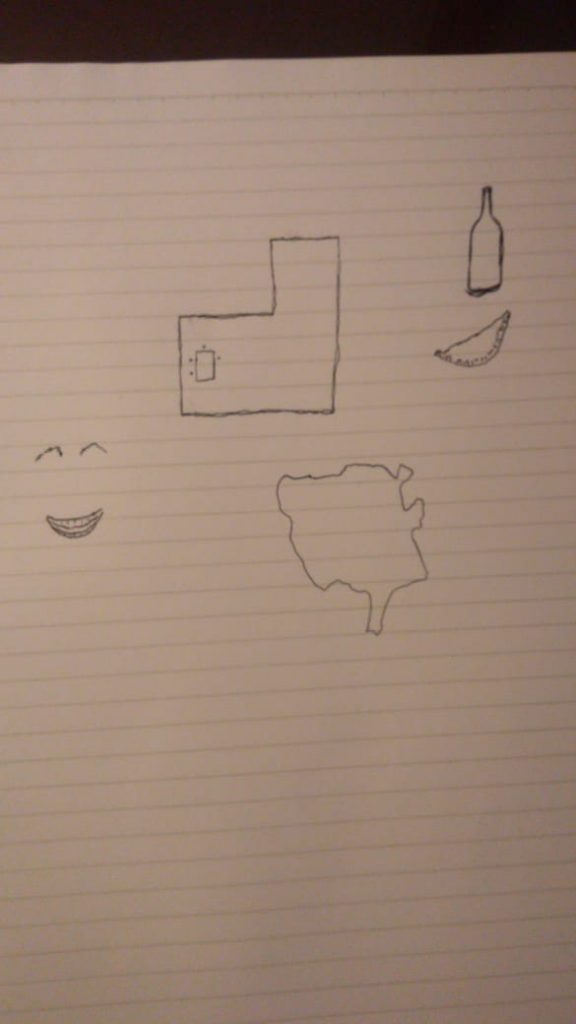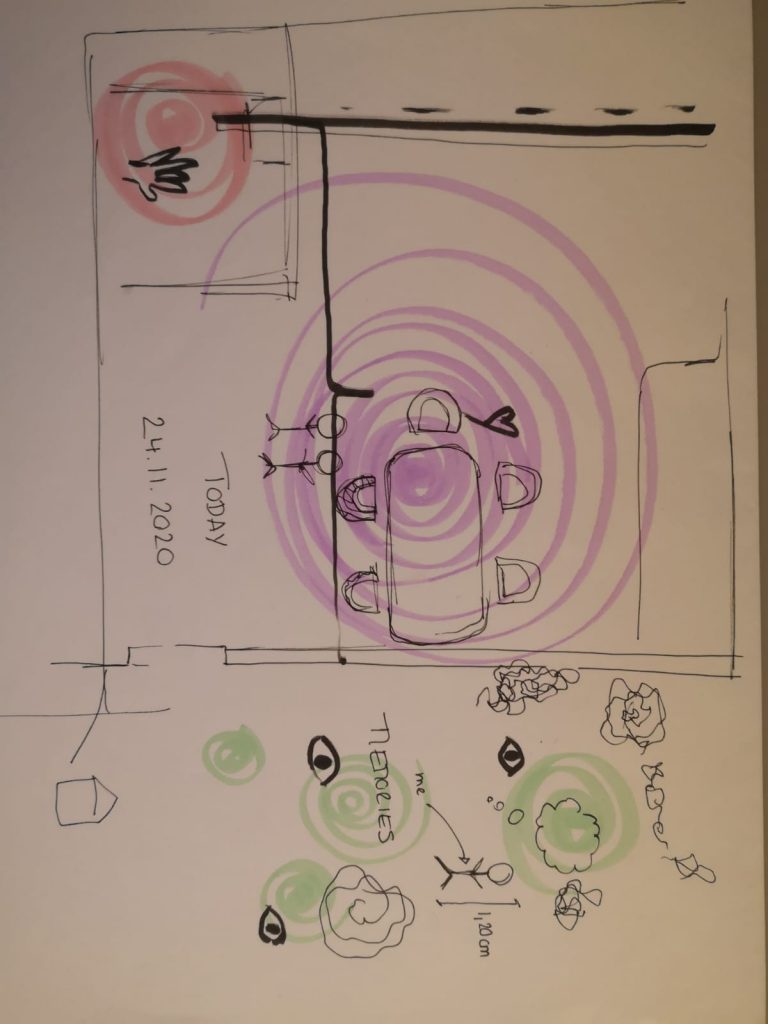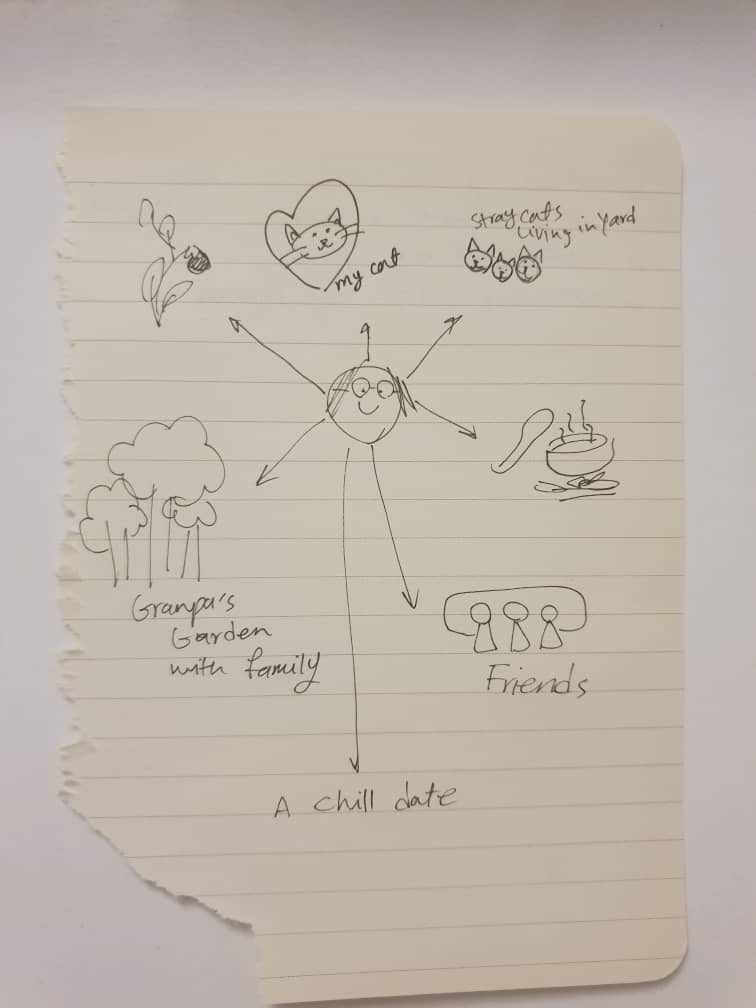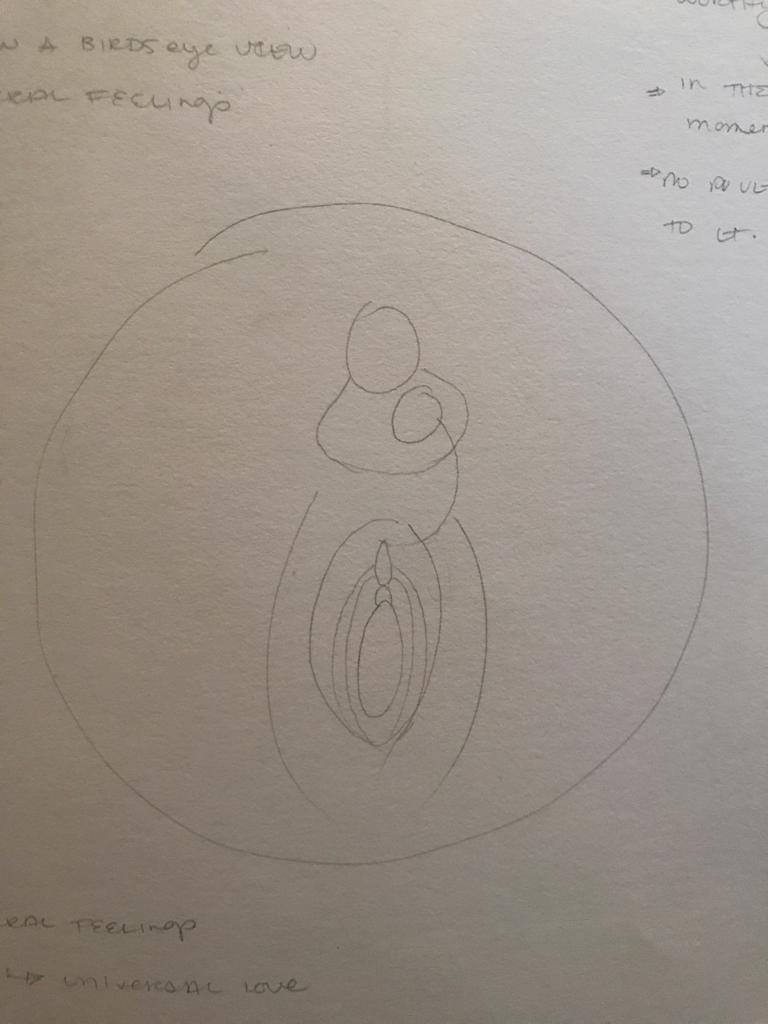Action 10
Joy (Verb): the practice of feeling great pleasure and happiness.
This was a quick activity that I facilitated virtually in class. I asked my classmates to :: Remember a moment when you joyed (practiced feeling great pleasure and happiness)
I asked them to draw a map of that moment. “Draw out where you were, some objects, human/non human entities. Give some scale. Really draw a location/ almost a geographic map. Preferably a birds eye view”. (5 mins)
After the mapping I asked them all to imitate/replicate with their facial expression that same feeling of joy? Here’s a screen shot:
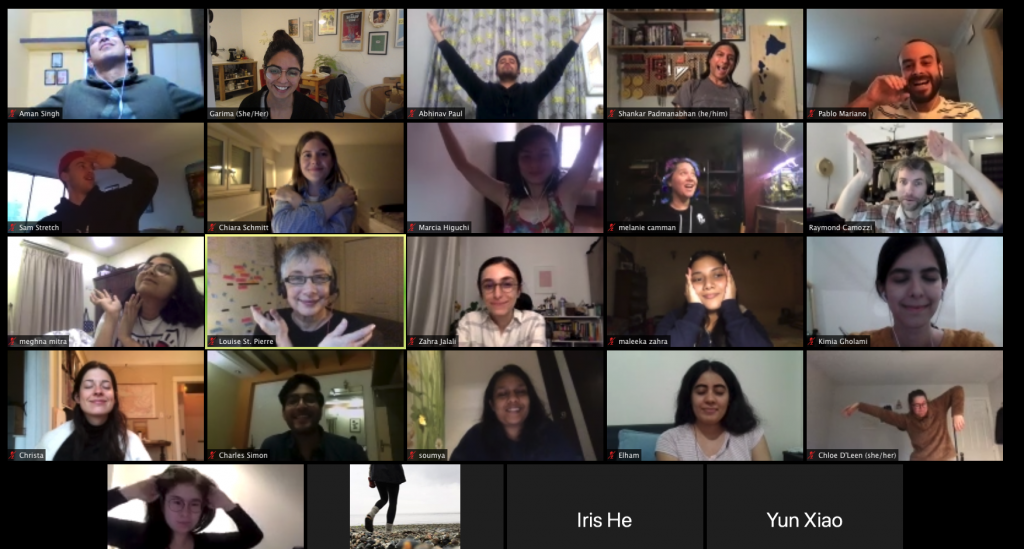
I then asked them a rapid serious of questions about their joy memory for the next 10 minutes. I asked them to shout out their answers as I documented them really quickly on a google doc
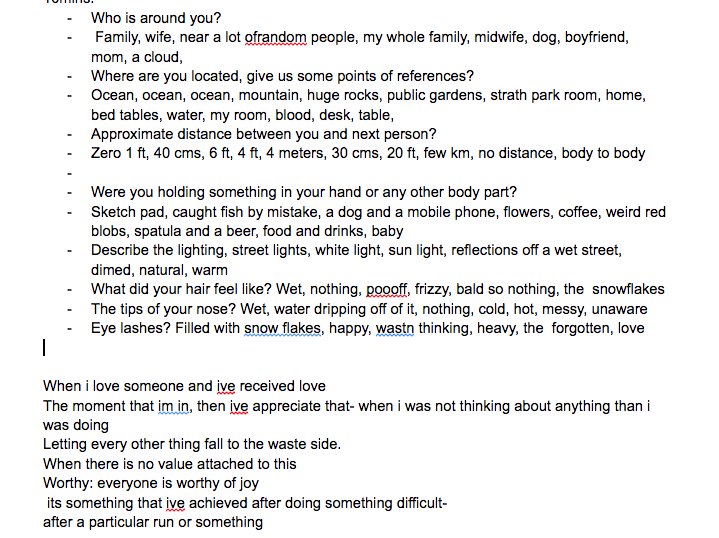
The series of questions were:
Who is around you?
Where are you located? Give some reference points?
Approximate distance between you and the next person?
Were you holding something in your hand or any other body part?
Describe the lighting
What did you hair feel like?
The tips of your nose?
Eye lashes?
I finished this exercise by taking 5 minutes to reflect on how everyone felt after the action. What worked, what didnt? Everyone seemed to enjoy this very much! It seemed like we all needed this. I didnt realize when I woke up that morning and haphazardly designed this little action that it would be so welcomed by the class.
Other Random thoughts::
>>I had a few conversations with people about joy after this workshop. There was a lot of mention of playfulness and childlike experiencing of joy in these conversation. This has made me reflect on other conversations on play and especially play in design- designing playful encounters to foster or connect with an innocence and playfulness characterized as childlike. Its almost as if the state of childhood or being a kid guarantees a sense of playfulness and innocence. I wonder if this equating of playfulness and childhood is fair? And by extension childhood and unfettered joyfulness, and then through some transitive property playfulness and joyfulness? Even for very young children, to what extent does play have to be fostered, taught, facilitated or at the least permitted? I take issue with how playfulness and joyfulness are portrayed as innate in children, which, to me, undermines the environmental conditions that play an integral role in shaping so much of a child’s ability to practice play and joy. Practicing playfulness and joyfulness are active processes whether for children or adults, but I feel that the rhetoric around play does not reflect that? Why are we so determined to replicate “childlike” play and “childlike” joy?
>>Kimerrer talks about the language of animacy. In indigenous languages inanimate beings are described as verbs. I wanted to do something similar here for joy, a feeling, to it give it life, power, agency. And to consider how that giving of agency to something else gives me power (See Pleasure Activism by Adrienna Marie Brown). Animacy is also huge part of the hinduism and has been a big part of my upbringing. Animacy in my culture is reflected through ritualized reverence of inanimate and living beings. Obviously a disjointed thought, I wanted to throw that in here.
Worlds Colliding and Collapsing on my Google Doc
The following are maps that my classmates submitted. These are their moments of joy.
